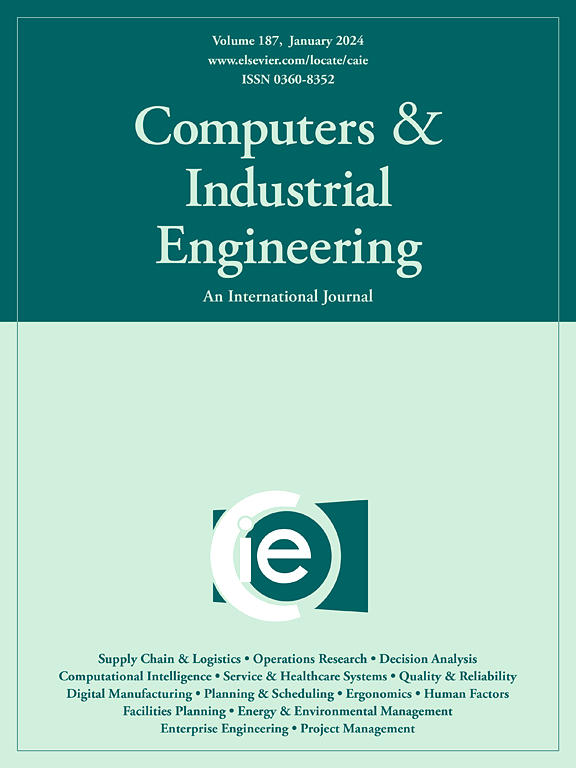易腐食品的动态库存共享、订购和定价策略,以实现利润最大化和浪费最小化
IF 6.7
1区 工程技术
Q1 COMPUTER SCIENCE, INTERDISCIPLINARY APPLICATIONS
引用次数: 0
摘要
易腐食品的有效管理是至关重要的杂货零售商平衡利润和减少浪费。本研究解决了在两个分支机构销售不同年龄的易腐食品的挑战,结合了新旧产品之间的消费者行为和需求变化。以利润最大化和浪费最小化为目标,建立了一种双目标无限视界动态规划模型,对集中定价、订货和库存共享决策进行优化。数值分析表明,库存共享有效地平衡了库存水平,减少了食物浪费。研究结果表明,优先考虑减少浪费导致更高的价格折扣和增加库存共享,而优先考虑利润最大化导致销售新产品和减少库存共享。敏感性分析强调了市场细分和价格差异化策略的重要性。这些见解为零售商改进库存和定价决策、适应监管压力以及改善整体供应链绩效提供了有价值的指导。本文章由计算机程序翻译,如有差异,请以英文原文为准。
Dynamic inventory sharing, ordering, and pricing strategies for perishable foods to maximize profit and minimize waste
Effective management of perishable food products is essential for grocery retailers to balance profitability and waste reduction. This study addresses the challenge of selling perishable food products with varying ages across two branches, incorporating consumer behavior and demand shifts between old and new products. A bi-objective infinite horizon dynamic programming model is developed to optimize centralized pricing, ordering, and inventory sharing decisions, aiming to maximize profit and minimize waste. Numerical analysis demonstrates that inventory sharing effectively balances stock levels and reduces food waste. Findings indicate that prioritizing waste reduction leads to higher price discounts and increased inventory sharing, while prioritizing profit maximization results in selling newer products and reducing inventory sharing. Sensitivity analyses highlight the importance of market segmentation and price differentiation strategies. These insights provide valuable guidance for retailers in refining inventory and pricing decisions, adapting to regulatory pressures, and improving overall supply chain performance.
求助全文
通过发布文献求助,成功后即可免费获取论文全文。
去求助
来源期刊

Computers & Industrial Engineering
工程技术-工程:工业
CiteScore
12.70
自引率
12.70%
发文量
794
审稿时长
10.6 months
期刊介绍:
Computers & Industrial Engineering (CAIE) is dedicated to researchers, educators, and practitioners in industrial engineering and related fields. Pioneering the integration of computers in research, education, and practice, industrial engineering has evolved to make computers and electronic communication integral to its domain. CAIE publishes original contributions focusing on the development of novel computerized methodologies to address industrial engineering problems. It also highlights the applications of these methodologies to issues within the broader industrial engineering and associated communities. The journal actively encourages submissions that push the boundaries of fundamental theories and concepts in industrial engineering techniques.
 求助内容:
求助内容: 应助结果提醒方式:
应助结果提醒方式:


